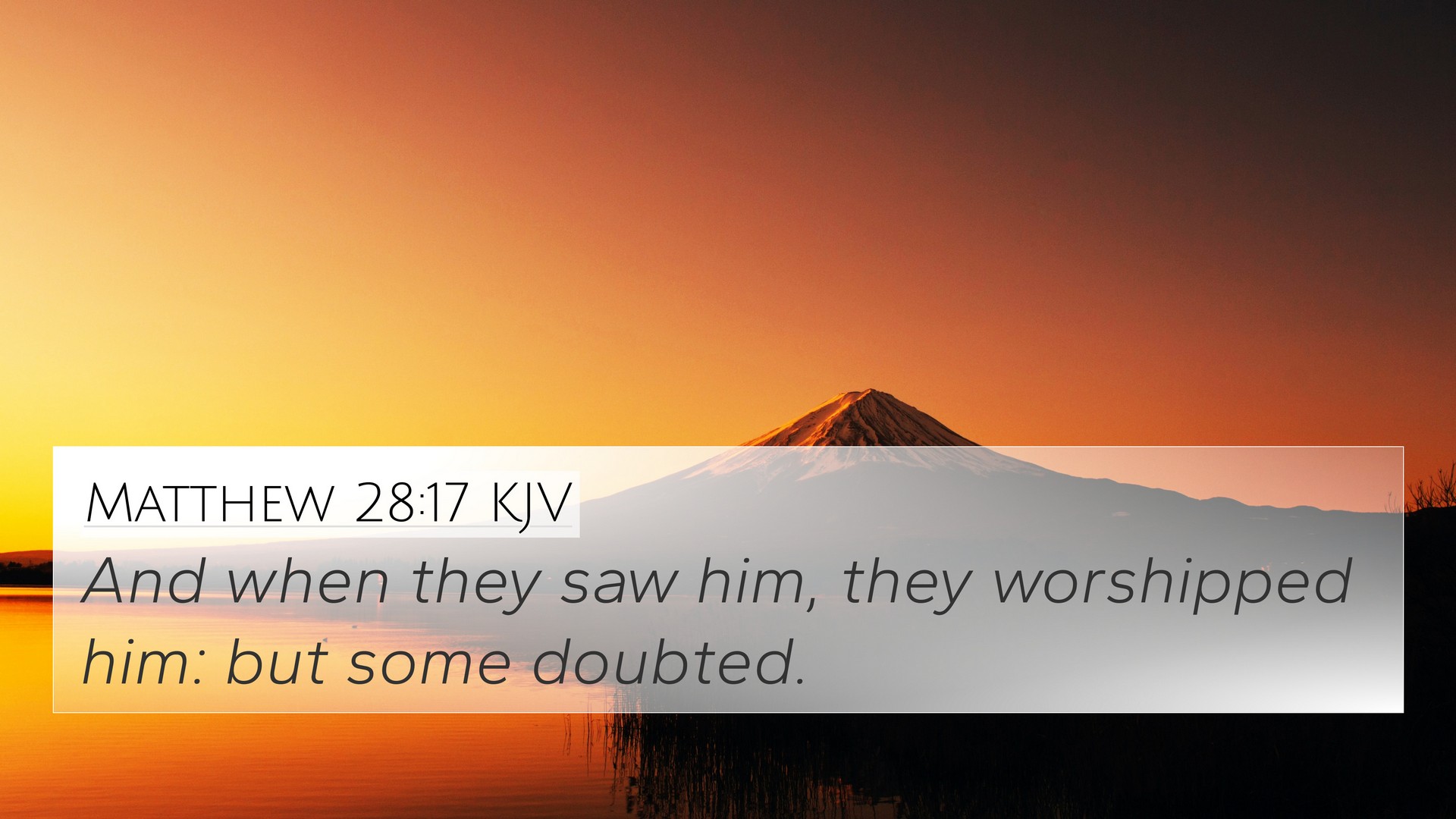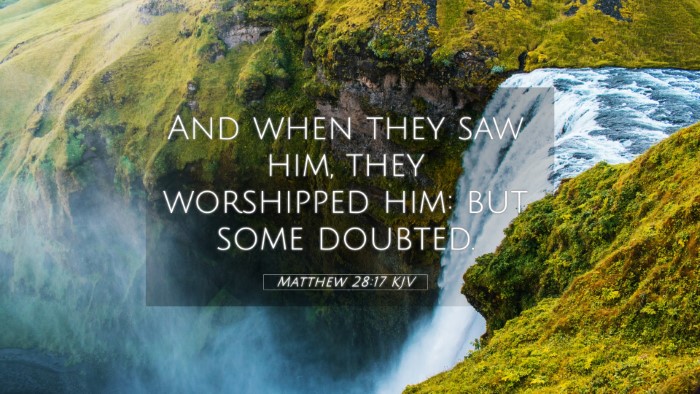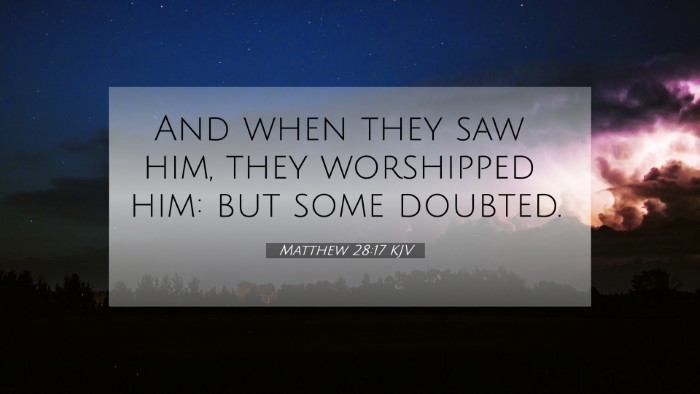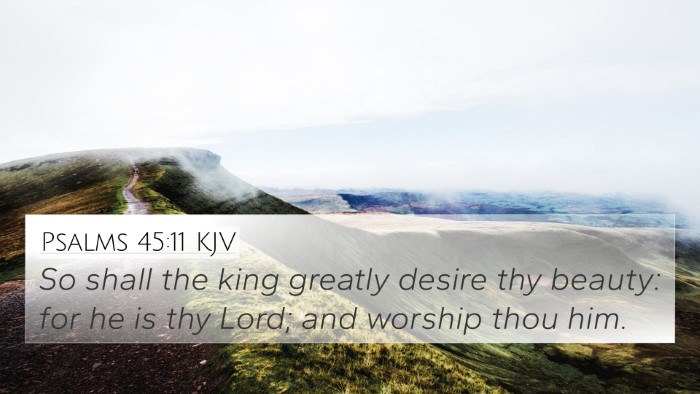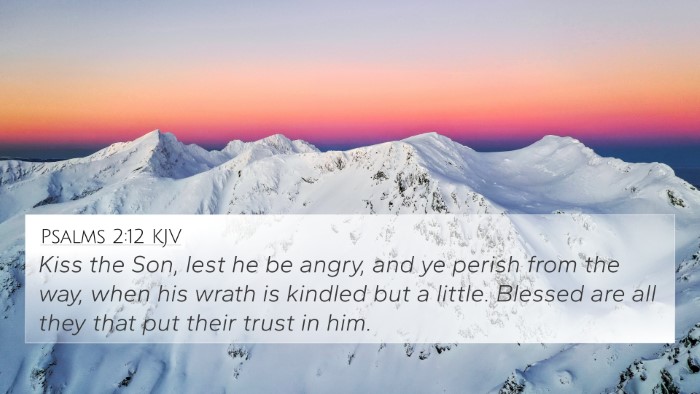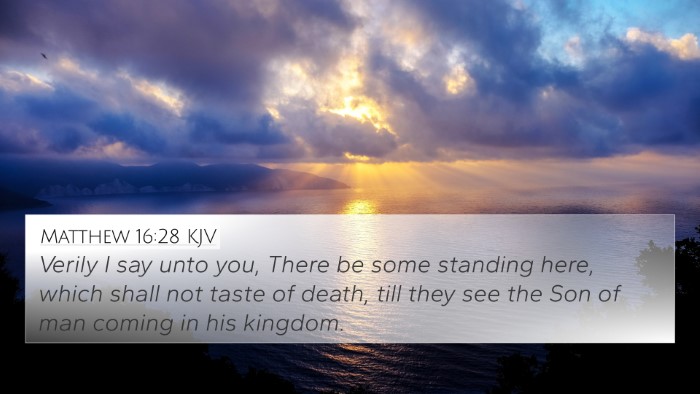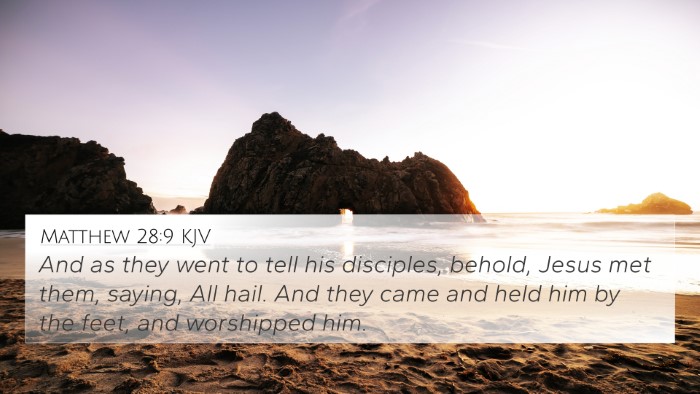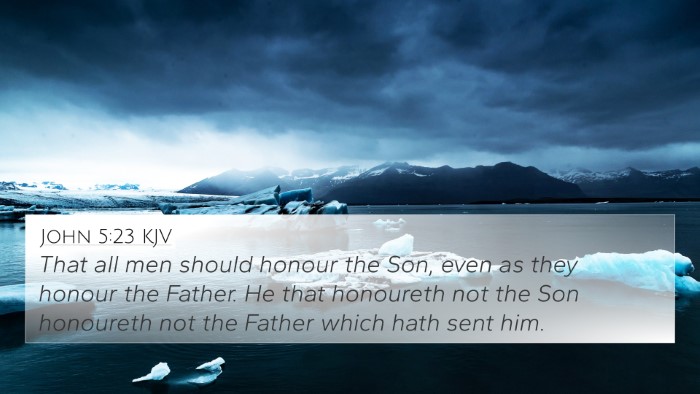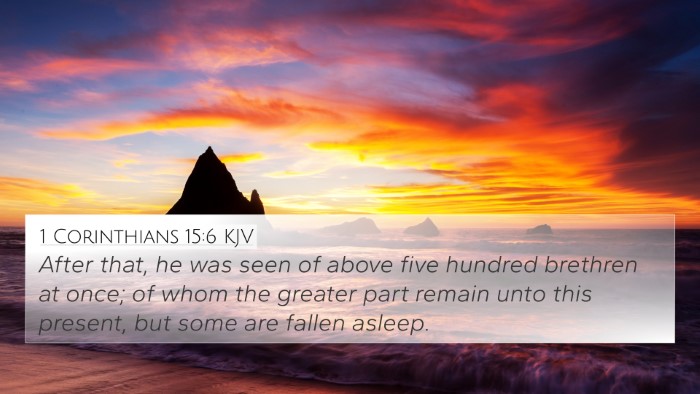Understanding Matthew 28:17
Matthew 28:17, which states, "When they saw him, they worshipped him: but some doubted," reveals the mixed reactions of the disciples upon encountering the resurrected Jesus. This moment is significant as it illustrates the transition from doubt to faith in the power of Christ's resurrection and the mission entrusted to the disciples.
Exegesis and Commentary Insights
Matthew Henry's Commentary: Matthew Henry emphasizes the notion of worship as a proper response to witnessing the resurrected Lord. He notes that worship reflects reverence and honor toward Jesus, indicating His divine authority. The mention of doubt illustrates the human struggle with faith, especially when faced with miraculous events.
Albert Barnes' Notes: Albert Barnes highlights the role of doubt as a common human experience. He suggests that while many worshipped, there were some who hesitated in their belief. This dual reaction demonstrates the reality of faith's challenges and the call to overcome disbelief through personal encounters with Christ. He urges readers to consider the implications of seeing the risen Christ and responding with faith.
Adam Clarke's Commentary: Adam Clarke points to the significance of the setting in which this declaration of doubt occurs. He discusses the resurrection as a pivotal event that requires a personal affirmation of faith. Clarke also suggests that the presence of doubt amidst worship shows a spectrum of belief that invites all followers to seek deeper understanding and assurance in their faith journey.
Thematic Connections
This verse connects to several other scriptures, illustrating the broader biblical theme of faith amidst doubt and the acknowledgment of Christ's Lordship. Below are notable Bible verse connections:
- John 20:24-29: Thomas' doubt and eventual confession of faith upon seeing Christ reflect a similar theme.
- Luke 24:36-40: The disciples' initial fear and doubt upon seeing the resurrected Jesus resonate with Matthew 28:17.
- Mark 16:14: The rebuke of the disciples for their unbelief mirrors the hesitance found in this passage.
- Hebrews 11:1: “Now faith is the substance of things hoped for, the evidence of things not seen” speaks to the essence of believing in what is not immediately apparent.
- James 1:6: Discusses the need for unwavering faith, suggesting that doubt can hinder one's walk with God.
- Romans 10:9-10: The declaration of belief in one’s heart underscores the need for faith that leads to salvation, contrasting with the doubt seen in Matthew 28:17.
- 1 Corinthians 15:12-14: Paul underscores the significance of belief in the resurrection, linking faith’s impact to the central doctrine of Christianity.
- Philippians 2:9-11: The exaltation of Jesus and the recognition of His Lordship connects to the worship expressed by the disciples.
- Luke 17:5-6: Jesus teaches about faith, showing that even a small amount of belief can lead to great things.
- Acts 1:3: Emphasizes the importance of evidenced belief based on the resurrection appearances of Jesus.
Practical Applications and Reflections
For contemporary believers, Matthew 28:17 invites reflection on personal experiences of doubt and faith. It encourages individuals to:
- Engage in honest dialogue: Discuss doubts with trusted mentors or fellow believers, mirroring the disciples' communal experiences.
- Seek personal encounter: Actively pursue experiences that deepen faith, similar to the disciples witnessing the resurrected Christ.
- Embrace worship: Recognize that worship can be a powerful response to both belief and doubt, uniting the heart towards God.
- Utilize cross-referencing tools: Explore interrelated scriptures to deepen understanding of faith and doubt through biblical narratives.
Conclusion
Matthew 28:17 serves as a profound reminder of the tension between worship and doubt. By recognizing these mixed reactions, believers can find solace in their struggles with faith while being encouraged to connect deeply with the truth of Christ’s resurrection. Furthermore, the interconnectedness of Scripture through cross-references allows for a richer understanding of biblical themes, contributing to a more comprehensive faith journey.
Additional Resources
For those interested in exploring the connections between Bible verses further, consider utilizing:
- Bible concordances to find related scriptures.
- Cross-reference Bible studies that highlight thematic connections.
- Bible reference resources that provide a structured approach to understanding inter-Biblical dialogue.
